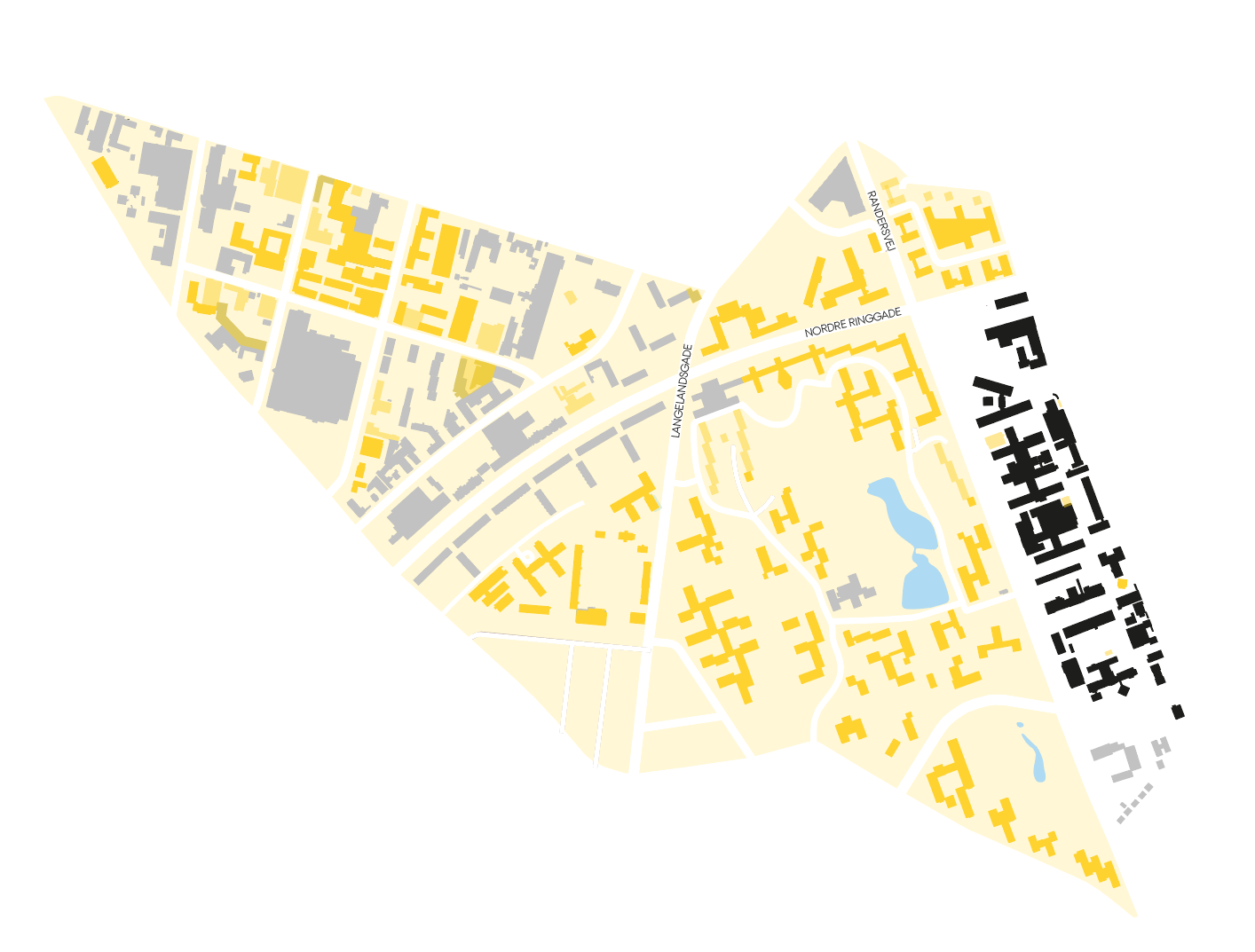"Build the campus you need, but start by finding an overall concept."
Omnibus has talked to architect Jean Pierre Bolívar. Since 2008 he has been a partner in BUSarchitektur and has been involved in major university and other building projects around the world. One university drawing particular attention to itself is Vienna University of Business and Economics, which was constructed and inaugurated between 2008-2014.

Find out what you want to have - and what you DON'T want! That is the simple advice from partner and architect Jean Pierre Bolívar, BUSarchitektur, a man who is internationally recognised for university projects in the ‘large’ category. He is also part of the team behind the idea and concept, development and construction of Vienna University of Economics and Business (Campus WU). A university which is in certain areas similar to Aarhus University.
Facts: From municipal hospital to campus
In 2019, Aarhus University will take over the land and buildings on Nørrebrogade that previously housed the municipal hospital – currently Aarhus University Hospital. AU expects to be able to begin moving research and teaching activities to the new area during 2020 at the earliest, as the site must first undergo a renovation.
The buildings total 110,000 m2. Several were designed by the architect C. F. Møller, who also designed the university buildings in the University Park.
AU does not have the right to self-governance. The university is therefore leasing the buildings from the Forskningsfondens Ejendomsselskab A/S (FEAS), who purchased the buildings from the Central Denmark Region for a price of DKK 807.5 million.
Facts: AU's vision for the new campus:
To consolidate and strengthen a variety of the university’s research activities, both by expanding existing activities and relocating some of the activities that are currently spread over various locations.
To take the opportunity to renovate existing research and teaching facilities and to add new research facilities.
Other developments under consideration include researcher and student housing and extended collaboration with both established and new businesses.
"Campus WU began back to front. Here it was the university buildings that had to fit into the landscape while, at the same time, creating corridors between the city and Prater Park. We built almost into the park and very close to the city," says Jean Pierre Bolívar.
He is confident that Campus WU was a success because the developers knew what they wanted. So BUSarchitektur could therefore fully concentrate on their task.
"Many clients need assistance during the clarification process. It’s often a good investment to include input from the architects during the concept development phase, starting with the campus masterplan," he says.
Connecting with the city
Two key elements were in play in the concept that was used in Vienna. One was the connection to the urban environment, the city's largest park Prater Park and the neighbours. The other was that the area had to provide space for dialogue and be a place where knowledge and people could meet with each other and the neighbours as for example the Vienna Fair.
In Jean Pierre Bolívar’s experience, what happens is that square metres, digital opportunities, class sizes, technical services and the choice of building materials quickly become the focal points when a developer draws up the terms of an architectural competition. His proposal is simple.
"Hold a competition for architects and ask them to present proposals for how the university should develop a concept for the new campus, and how the terms of the competition should look when the competition for the actual project is announced. In this case it was also possible thanks to the masterplan. So that was our first task: to define the setting for the whole campus.”
The university of tomorrow
Hope for the future, a three-dimensional reality, a new world and a universe where research and learning are given the optimal conditions -- this is how the world-famous architect studio describes Campus WU in the video from the official opening. The five independent buildings which today comprise Campus WU have each been designed by individual design studios. This can also be seen and the effect of the architects' different national points-of-view is a university with an international and urban expression.
READ MORE: Dream campus: Green areas, soft sofas and electric kettles
The Student Centre building was designed by the Japanese architect Atelier Hitoshe Abe (Sendai/Los Angeles), while the Iraqi/British architect Zaha Hadid (Hamburg) is the person behind the design of the building comprising the university library and learning centre. While Sir Peter Cook and CRABstudio (London) was responsible for the administration building. A building that sets completely new standards for "boring" administration corridors. As yellow and orange colours are organically weaved into the building itself. In fact, the word “boring" is completely superfluous in any vocabulary for describing the architecture of the Campus WU.
Life from morning to evening
Another of the developer’s central requirements was that the campus must open up and act as a meeting place from early morning to late at night for students, staff and other people living in the city.
"We created open areas that you’d have to walk through to get from one place to another. When people move around, they meet new people. This underlies the buildings and the way in which they’re placed in relation to each other. This approach also applies inside the buildings."
Jean Pierre Bolívar lives in Vienna and often visits the campus.
"I go there with my children, to visit a café, the campus playgrounds and I walk across the open spaces when we are going somewhere. I think it works," he says.
MORE INFORMATION:
Translated by Peter Lambourne

